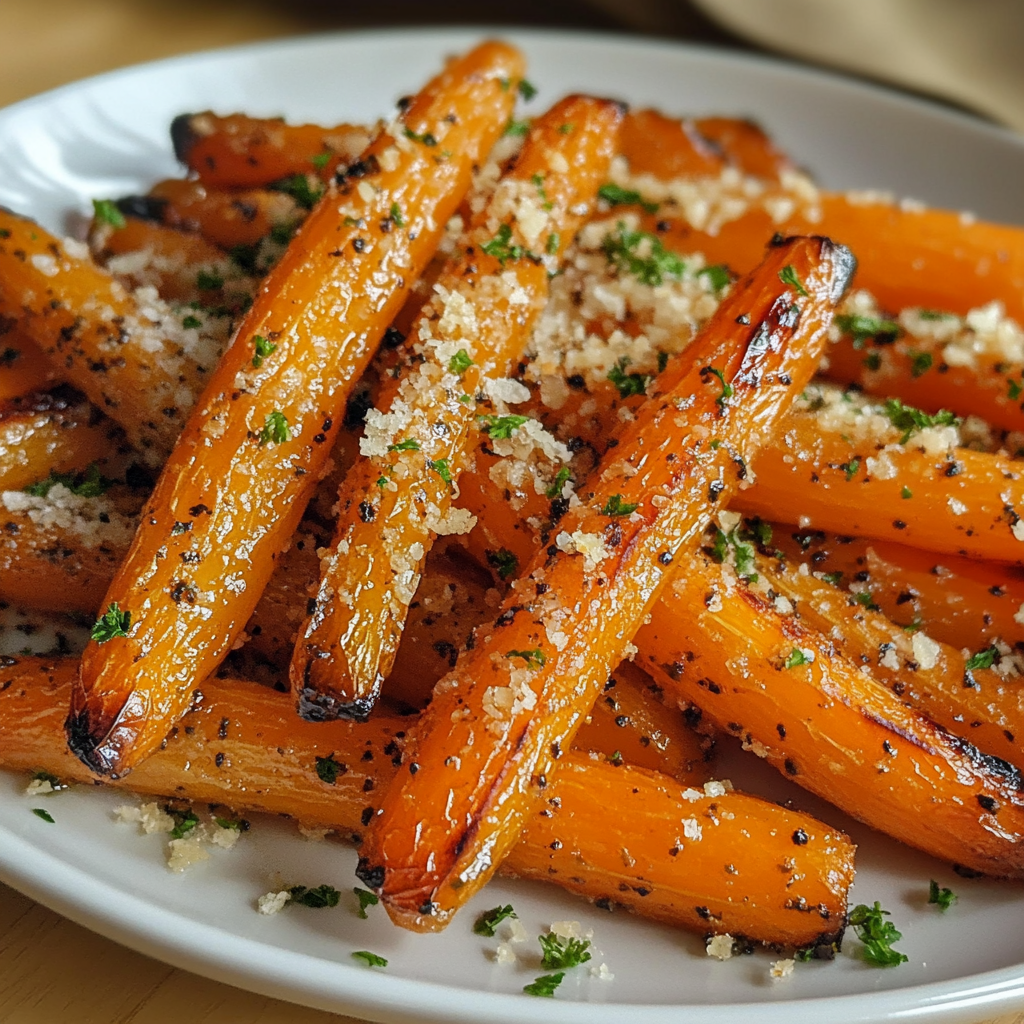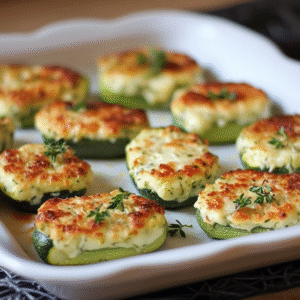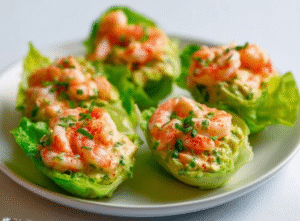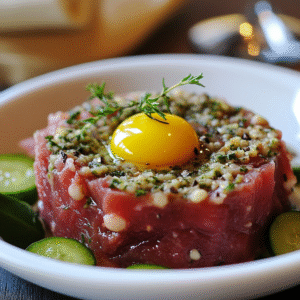Description of this Recipe: These Roasted Garlic Parmesan Carrots are a simple, yet incredibly flavorful side dish that transforms ordinary carrots into a culinary delight. Roasting brings out their natural sweetness, while the garlic and parmesan cheese add a savory, nutty richness that’s simply irresistible.
Why You’ll Love This Recipe: This recipe is a winner for several reasons. It’s quick and easy to prepare, requiring minimal effort and ingredients. The combination of flavors is a crowd-pleaser, making it a great option for family dinners or gatherings. Plus, it’s a healthy and delicious way to get your vegetables!
Introduction
Roasted carrots are a classic side dish, but this recipe elevates them to a whole new level. The addition of garlic and parmesan creates a symphony of flavors that complements the natural sweetness of the carrots. Roasting the carrots at a high temperature allows them to caramelize, developing a slightly crispy exterior and a tender interior. This dish is perfect for busy weeknights or special occasions, and it’s sure to become a family favorite. The aroma of garlic and parmesan wafting through your kitchen while these carrots roast is simply divine. This recipe is also incredibly versatile. You can easily adjust the amount of garlic or parmesan to suit your preferences, or add other herbs and spices to create your own unique flavor profile.
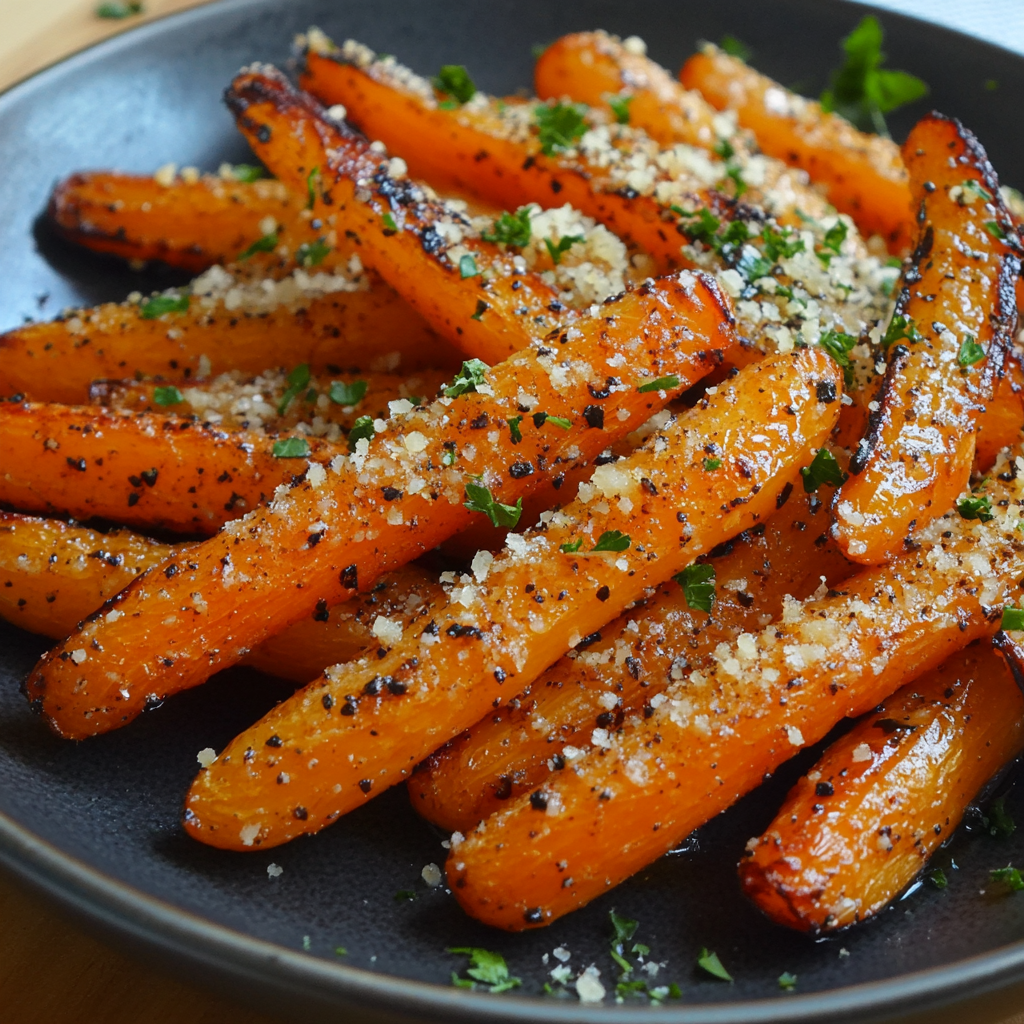
Ingrédients
Method
- Étape 1 : Mélanger les ingrédients secs : Dans un grand bol, fouetter ensemble la farine, le sucre, le sel et la levure sèche active. Assurez-vous que la levure est uniformément répartie dans le mélange de farine. Cela assurera une activation correcte et une levée uniforme de la pâte.
- Étape 2 : Ajouter les ingrédients humides : Créer un puits au centre des ingrédients secs. Ajouter les œufs et le lait tiède. À l’aide d’une cuillère en bois ou d’un batteur sur socle équipé d’un crochet pétrisseur, commencer à mélanger les ingrédients ensemble. Commencer lentement au début pour éviter que la farine ne vole partout.
- Étape 3 : Former une pâte : Continuer à mélanger jusqu’à ce qu’une pâte irrégulière se forme. La pâte sera initialement assez collante, mais ne vous inquiétez pas, elle se formera au fur et à mesure que vous la pétrissez.
- Étape 4 : Incorporer le beurre : C’est l’étape la plus cruciale pour créer cette texture de brioche caractéristique. Ajouter graduellement le beurre ramolli, une cuillère à soupe à la fois, à la pâte. Assurez-vous que chaque morceau de beurre est entièrement incorporé avant d’ajouter le suivant. Ce processus prendra du temps, alors soyez patient. La pâte semblera très molle et presque liquide au début, mais elle finira par se transformer en une pâte lisse et élastique.
- Étape 5 : Pétrir la pâte : Une fois que tout le beurre a été incorporé, pétrir la pâte pendant 8 à 10 minutes, soit à la main sur une surface légèrement farinée, soit dans un batteur sur socle équipé d’un crochet pétrisseur. La pâte doit être lisse, élastique et légèrement collante au toucher. Si vous pétrissez à la main, utilisez une technique de poussée-rotation-pliage pour développer correctement le gluten.
- Étape 6 : Première levée (fermentation en masse) : Placer la pâte dans un bol légèrement huilé, en la retournant pour en enrober tous les côtés. Couvrir le bol de film plastique ou d’un torchon propre. Laisser la pâte lever dans un endroit chaud pendant environ 2 heures, ou jusqu’à ce qu’elle ait doublé de volume. Cette première levée est cruciale pour développer la saveur et la texture de la brioche.
- Étape 7 : Dégazer et réfrigérer : Dégazer doucement la pâte pour libérer l’air. Couvrir hermétiquement le bol et réfrigérer la pâte pendant au moins 4 heures, ou de préférence toute la nuit. Cette période de refroidissement permet au beurre de se solidifier, ce qui rend la pâte plus facile à manipuler et donne une mie plus feuilletée et plus tendre.
- Étape 8 : Façonner la pâte : Sortir la pâte du réfrigérateur et la diviser délicatement en portions égales, selon la taille de la miche que vous souhaitez créer. Vous pouvez façonner la pâte en petits pains individuels, en une miche tressée ou en une miche rectangulaire classique. Pour une miche rectangulaire, rouler délicatement la pâte en un boudin et la placer dans un moule à pain graissé.
- Étape 9 : Deuxième levée (levée finale) : Couvrir la pâte façonnée de film plastique ou d’un torchon propre et la laisser lever dans un endroit chaud pendant environ 30 minutes, ou jusqu’à ce qu’elle ait visiblement gonflé.
- Étape 10 : Préchauffer et cuire : Préchauffer le four à 180°C (350°F). Dans un petit bol, fouetter ensemble le jaune d’œuf avec une cuillère à soupe d’eau pour créer une dorure. Badigeonner délicatement le dessus de la miche avec la dorure.
- Étape 11 : Cuire la brioche : Cuire la brioche pendant 25 à 30 minutes, ou jusqu’à ce qu’elle soit dorée et que la température interne atteigne 88 à 93°C (190 à 200°F). Si le dessus du pain brunit trop rapidement, vous pouvez le recouvrir d’une feuille d’aluminium.
- Étape 12 : Refroidir et déguster : Sortir la brioche du four et la laisser refroidir dans le moule pendant quelques minutes avant de la transférer sur une grille pour qu’elle refroidisse complètement. Résister à l’envie de la couper lorsqu’elle est encore chaude, car cela peut donner une texture gommeuse.
COOKING Note:
For extra crispy carrots, you can broil them for the last few minutes of cooking, but watch them carefully to prevent burning. Keep a close eye on the carrots while broiling, as they can burn very quickly.
Serving Suggestions:
These Roasted Garlic Parmesan Carrots are a versatile side dish that pairs well with a variety of main courses. They are delicious with roasted chicken, grilled steak, baked salmon, or vegetarian options like lentil loaf or tofu scramble. They can also be served as part of a holiday meal, such as Thanksgiving or Christmas.
Tips:
- For best results, use fresh, high-quality carrots.
- Don’t overcrowd the baking sheet, as this will cause the carrots to steam instead of roast.
- Adjust the amount of garlic and parmesan to suit your preferences.
- Add other herbs and spices to create your own unique flavor profile.
- Store leftovers in an airtight container in the refrigerator for up to 3 days.
Conclusion
These Roasted Garlic Parmesan Carrots are a simple, flavorful, and healthy side dish that’s sure to become a staple in your kitchen. The combination of sweet roasted carrots, savory garlic, and nutty parmesan cheese is simply irresistible. Whether you’re looking for a quick weeknight meal or a special occasion side dish, this recipe is sure to please. So, grab a bag of carrots, preheat your oven, and get ready to enjoy a culinary masterpiece! The ease of preparation and the delicious results make this recipe a true winner. Plus, the vibrant color and enticing aroma of these roasted carrots will brighten up any table. Don’t be surprised if your family and friends ask for seconds! The possibilities are endless with this recipe, so feel free to experiment with different variations and make it your own. Happy cooking!
Q&A:
Q1: Can I use baby carrots for this recipe?
A: Yes, you can use baby carrots, but keep in mind that they may cook faster than regular carrots. Reduce the cooking time accordingly and check for tenderness after about 15 minutes. Also, baby carrots tend to be sweeter than regular carrots, so you may want to adjust the amount of Parmesan cheese to balance the flavors. Ensure you toss them well with the garlic butter mixture for even coating.
Q2: I don’t have Italian seasoning. What can I use instead?
A: If you don’t have Italian seasoning, you can create your own blend by combining equal parts of dried oregano, basil, rosemary, thyme, and marjoram. Alternatively, you can use a single herb like dried oregano or thyme for a slightly different flavor profile. Using fresh herbs, finely chopped, can also enhance the flavor significantly. Start with about 1 teaspoon of the substitute and adjust to your taste.
Q3: Can I use a different type of cheese?
A: While Parmesan cheese provides a distinctive nutty and salty flavor, you can substitute it with other hard cheeses like Pecorino Romano or Asiago. These cheeses offer a similar texture and flavor profile. For a milder flavor, you can use Grana Padano. Avoid using soft cheeses like mozzarella or cheddar, as they won’t provide the same texture and flavor when roasted. Always grate the cheese finely for even distribution.
Q4: How do I prevent the carrots from burning?
A: To prevent the carrots from burning, ensure they are arranged in a single layer on the baking sheet. Overcrowding can cause them to steam instead of roast properly. Also, monitor the oven temperature and adjust it if necessary. If you notice the carrots are browning too quickly, you can lower the oven temperature by 25 degrees or cover the baking sheet loosely with aluminum foil. Tossing the carrots halfway through cooking also helps prevent burning.
Q5: Can I prepare this recipe ahead of time?
A: Yes, you can prepare the carrots ahead of time by washing, peeling, and slicing them. You can also mix the butter, garlic, Italian seasoning, salt, and pepper in advance. Store the carrots and the butter mixture separately in the refrigerator. When you’re ready to cook, simply toss the carrots with the butter mixture, add the Parmesan cheese, and roast as directed. This can save you time on busy weeknights. However, for the best flavor and texture, it’s recommended to roast the carrots just before serving.

